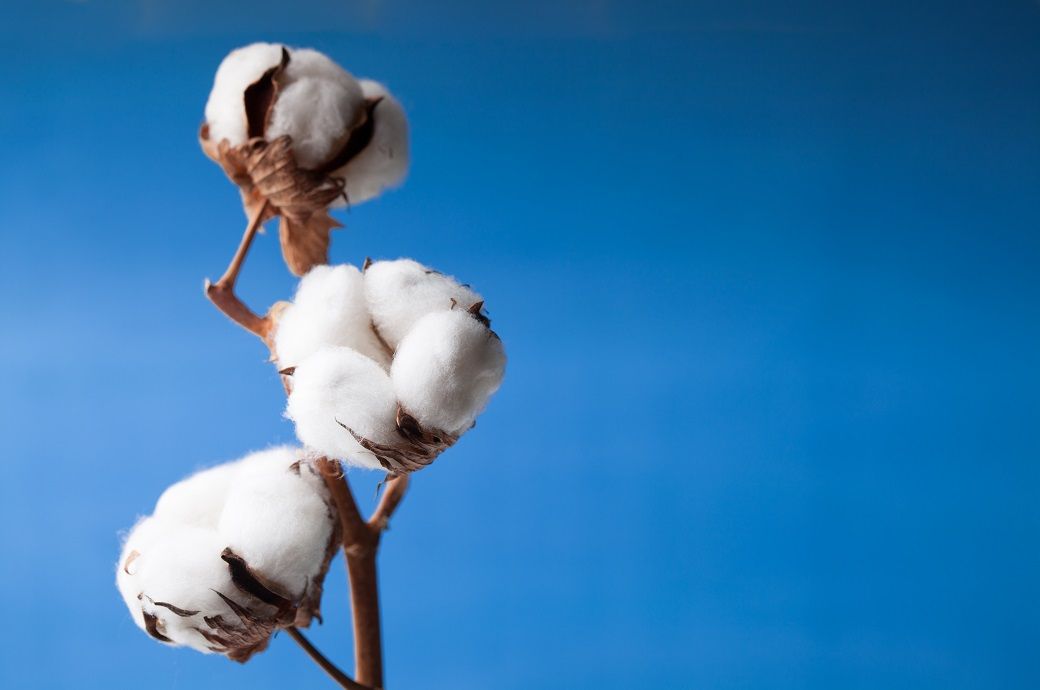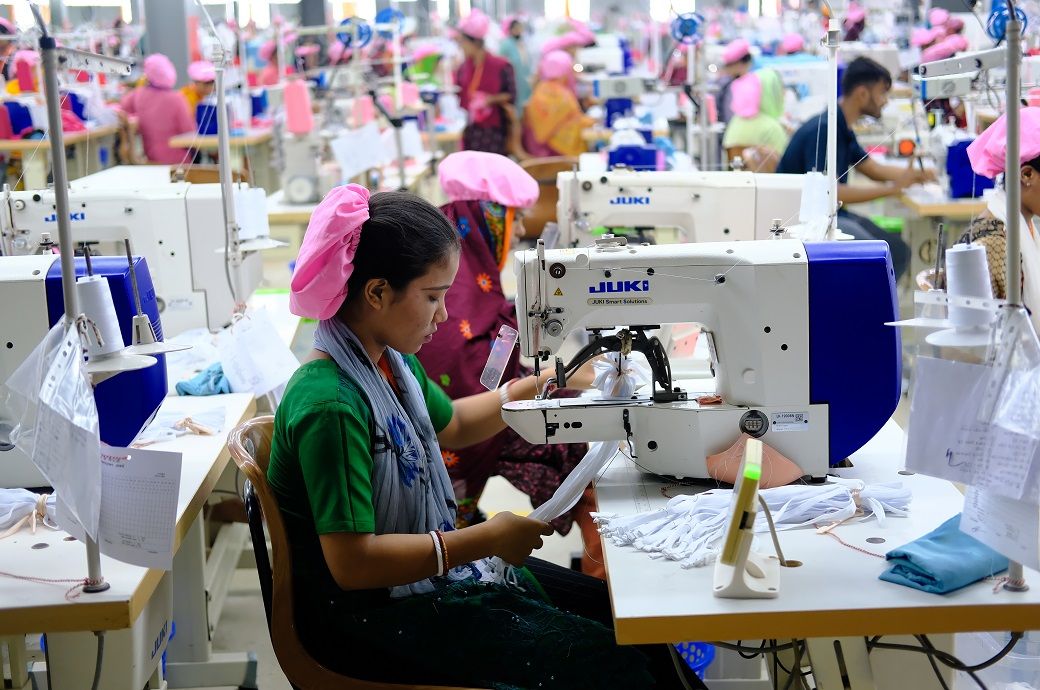Fashion
Germany pledges $0.58 mn to WTO fund for developing economies

Carmen Heidecke, ambassador of Germany to the WTO, signed the memorandum of understanding on behalf of the German Federal Government at the WTO on November 17, 2025.
The funding supports the latest cycle of technical assistance under the WTO’s Global Trust Fund, which will finance training programmes that enable government officials to deepen their understanding of multilateral trade rules and strengthen the implementation of their WTO commitments, the organization said in a release.
Germany has renewed its support for the WTO’s Global Trust Fund, which finances technical assistance and training for developing economies.
The fresh contribution will bolster capacity-building programmes that equip government officials to better understand trade rules and implement WTO commitments.
Since 2001, the fund has enabled around 2,800 workshops.
Established in 2001, the Global Trust Fund has supported around 2,800 training workshops to date. Over nearly 25 years, Germany has contributed approximately CHF 27.1 million (~$33.88 million) to the fund, reaffirming its long-standing commitment to more inclusive and equitable global trade.
“I thank Germany for its longstanding support for WTO technical assistance and capacity building. This latest contribution reinforces our shared commitment to empowering developing countries and LDCs in the multilateral trading system. This support enables these members to strengthen their technical expertise and advance their trade priorities more effectively,” director-general Ngozi Okonjo-Iweala said.
“Greater participation of developing countries in global trade strengthens a fair and inclusive multilateral trading system. Germany is proud to reaffirm its commitment to the WTO’s Global Trust Fund,” ambassador Heidecke said.
Fibre2Fashion News Desk (HU)
Fashion
ICE cotton falls ahead of delayed US weekly export sales data

ICE March 2026 cotton futures settled at 63.78 cents per pound, down 0.61 cent or 0.95 per cent. The contract marked its first close below 64 cents and set a new contract-low settlement. The December 2025 contract settled at 62.30 cents, down 27 points, raising concerns among bulls that December weakness could drag the March contract lower. March and July 2026 contracts also closed lower. For the week so far, cotton futures have posted net losses of 3–28 points across active months.
ICE cotton futures declined as traders await the USDA’s weekly export sales report, delayed for over a month due to the US shutdown.
March 2026 cotton hit a new contract low below 64 cents, while weak crude oil prices increased pressure by making polyester fibre cheaper.
Trading volume fell to a three-week low, with sentiment cautious despite expectations that export data may show stronger demand.
NYMEX crude oil futures declined due to reports of renewed diplomatic efforts to resolve the Russia–Ukraine conflict, which could ease supply risks. Losses in crude were partially limited by a larger-than-expected drop in US crude oil inventories, offering some support to energy markets. Lower crude prices make polyester fibre cheaper, adding pressure on US cotton.
Trading activity remained subdued, with 49,131 contracts traded, the lowest volume in three weeks, compared with 67,329 contracts cleared in the previous session. Intraday trade experienced mild consolidation and a brief upward pull, but the market failed to sustain momentum into the close.
ICE data showed deliverable No. 2 cotton inventories unchanged at 20,344 bales as of November 18, the same as the previous day.
Analysts said the market “was drawn slightly higher but failed to hold that momentum”. USDA’s weekly export sales report for the period ending October 2 will be released on Thursday. During the recent 43-day US government shutdown, the USDA suspended weekly export sales data and daily bulk-sale announcements, limiting demand visibility.
The upcoming USDA export sales report could be stronger than market expectations, but traders prefer to wait for confirmation.
In other markets, CBOT soybean futures closed lower as traders assessed demand prospects amid global uncertainty.
This morning (Indian Standard Time), ICE cotton for December 2025 was traded at 62.59 cents per pound (up 0.29 cent), cash cotton at 61.78 cents (down 0.61 cent), the March 2026 contract at 64.13 cents (up 0.21 cent), the May 2026 contract at 65.35 cents (up 0.32 cent), the July 2026 contract at 66.45 cents (up 0.33 cent), and the October 2026 contract at 67.11 cents (down 0.37 cent). A few contracts remained at their previous closing levels, with no trading recorded so far today.
Fibre2Fashion News Desk (KUL)
Fashion
Billionaire family turns India’s gold obsession into a fortune

By
Bloomberg
Published
November 20, 2025
Gold is having a moment in the sun and the billionaire Muthoot clan of India is reaping the benefits.
Their family-run firm that’s doled out gold loans for almost nine decades is on a roll as consumers take advantage of surging bullion prices to swap jewellery for short-term cash. The boom has pushed the company’s stock to a record, boosting the Muthoots’ combined fortune above $13 billion, according to the Bloomberg Billionaires Index.
“The market is exploding,” said George Alexander Muthoot, 70, the managing director of his eponymous firm and third-generation executive of the business. “Even for rich people, it’s fashionable today to take gold loans.”
Muthoot Finance Ltd.’s rise speaks to the growing clout of India’s shadow banking sector, which is helping fuel the country’s economic growth. Gold lending across all firms surged 35% in the 12 months ended in June to 13.4 trillion rupees ($151 billion), by far the fastest growth among consumer loans, according to CRIF High Mark Credit Information Services Pvt.
The company’s biggest challenge now is keeping rivals at bay, with gold hovering near a record high. Competition is heating up after Bain Capital agreed to pay about $500 million for an 18% stake in gold lender Manappuram Finance Ltd. Mitsubishi UFJ Financial Group Inc. meanwhile is reportedly in talks to buy 20% of shadow bank Shriram Finance Ltd. for $2.6 billion. Muthoot Finance’s plan to expand its 7,500-plus network of branches by up to 200 a year may not be enough to maintain its dominance as India’s top gold lender.
During an earnings call last week, analysts peppered Muthoot with questions about how the firm is going to deal with foreign competitors, as well as the local banks that are aggressively expanding their gold-loan portfolios. He shrugged off the queries, saying the overall market is expanding.
“There is no need to take any hasty or knee-jerk reactions,” said Muthoot. “The challenges in the operations will catch up with them.”
No country is as obsessed with gold as India, where households own about 34,600 tons, worth about $3.8 trillion, according to Morgan Stanley estimates. That’s more than the holdings at the central banks of the US, Germany, Italy, France, Russia, and China combined. For India’s population of 1.4 billion, that works out to almost 25 grams per person, valued at more than $3,250 at current prices. (By contrast, the country’s gross domestic product per capita is just $2,820, according to the IMF.)
Gold is deeply ingrained in India’s culture, often linked to Hindu religious rites. Dhanteras, celebrated at the start of the Diwali festival of lights, is a popular day to buy gold and worship Lakshmi, the goddess of wealth. Weddings are also ripe for purchases, with brides typically lavished in gold bangles, bracelets, rings and necklaces.
The practice of using gold as collateral for loans dates back centuries. Long before the Muthoots set up shop, small jewellers would offer cash to help clients get through rough patches. The size of the loan — sometimes as little as $17 — is tied to the jewellery’s worth. Higher gold prices boost their value, which leads to bigger loans — and more interest income for lenders like Muthoot Finance.
“It’s much easier to borrow from Muthoot,” said Sandarsh, a 27-year-old driver in Bengaluru who asked to be identified only by his first name. He took out a loan of about 500,000 rupees in 2023, using half of his family’s gold stash. He was charged 1.25% a month, cheaper than the rate offered by State Bank of India, he said. He used the money to invest in a biryani business, which ultimately failed, though he repaid the loan.
The Muthoot clan are Orthodox Christians, a tiny minority in the predominantly Hindu nation. The family’s given names are usually English, and George is particularly popular. Nine of the 15 company directors are named George. Muthoot and his brothers are the 19th generation of the family line.
Their business model is surprisingly simple. Clients bring their jewellery to a branch, where staff check the gold content before making a loan of up to 75% of the value. A minimum of 18-karat gold is required. To gauge purity, staffers rub the piece against an obsidian testing stone — called a Kasauti — to create a faint streak, before adding a nitric acid solution. If the line disappears, it may signal a fake, or low-quality gold. Borrowers typically take out loans for four to 12 months, before reclaiming their heirlooms after repaying the money. Muthoot Finance charges 1% to 1.5% a month on the loans. Annualised rates can top 19%.
“We only finance used jewellery,” Muthoot said in an interview from his office in Kochi, the commercial hub of Kerala state at the southern tip of India. “Most of the gold is owned by the family. When they give it as collateral, they’d like to take it back.”
Muthoot Finance branches are hardly ornate, considering the value of the assets inside. They tend to be in low-income neighbourhoods that are often shunned by major banks.
One branch in the financial hub of Mumbai is tucked away on a quiet side street behind a busy thoroughfare. A hardware store and mom-and-pop grocery shop sits next door, where hawkers selling custard apple and papaya park their carts.
The outlet is protected by a sliding metal grille, like an old-fashioned elevator door. Its facade is adorned with the bank’s logo of two elephants facing each other, their curled trunks forming an “M” for Muthoot. Along the wall are bright red posters of actor Amitabh Bachchan, a brand ambassador and one of India’s biggest Bollywood stars, cupping his hands in a traditional namaste greeting.
A security guard, cooled from the searing heat by a fan duct-taped to a small stool, locks the door with a heavy padlock whenever a customer enters. After clients are scanned with a hand-held metal detector, they’re served by staff from behind glass partitions.
Once the jewellery is deposited, it’s stored in the branch’s vault, whose doors are controlled from the company’s head office. The entire process takes less than an hour, and no credit history is required. The tight security is essential: Muthoot Finance held 209 metric tons of gold for clients — worth almost $28 billion — slightly more than the gold held in Singapore’s official foreign reserves.
Outstanding gold loans by the Keralite firm rose to 1.25 trillion rupees at the end of September, topping the 725.5 billion rupees in similar loans made by State Bank of India, the country’s largest lender. Still, SBI’s gold loan book jumped 87% from the previous year, faster than Muthoot Finance’s 45% growth rate.
While Muthoot Finance has dominated the business of gold financing, the company could do more to sell other products to diversify its revenue, said Parijat Garg, a Mumbai-based credit consultant who has tracked the company for a decade. Gold loans account for close to 90% of the group’s business, which also includes home financing and insurance.
“If I’m a gold loan customer, I may have insurance needs, I may have remittance needs,” Garg said.
Though the firm’s customers often have low incomes, defaults are rare. Muthoot’s non-performing loan rate of 2.3% is in line with commercial banks, which are subject to stricter regulations. Jewellery seized from any default is sold at auction.
The steady growth has led to three straight years of stock gains for the company, including a 73% rally this year. As a result, four family members have more than doubled their fortunes. Three of them each hold at least 10% of the firm, which now has a market value of almost $17 billion.
The clan is already grooming the next generation, according to Muthoot. Asked whether female family members can one day run the business, he said it’s a “sensitive” matter. “They get married, they go to the husband’s family,” he said.
Among his three deputies are George Muthoot Jacob, a 42-year-old nephew who holds law and business degrees from England.
Asked why he returned home instead of staying in the UK like so many other well-heeled Indians, the younger Muthoot seemed surprised by the question. “We have a great family business here,” he said.
Fashion
Bangladesh allows unions with min 20 workers; industry rejects move

The law required the consent of 20 per cent of the total workforce to form a trade union earlier.
Bangladesh recently issued a gazette notification announcing a new ordinance amending the Labour Act, allowing trade unions to be formed with the consent of at least 20 workers.
The law required the consent of 20 per cent of the total workforce to form a trade union earlier.
While the Bangladesh Labour Foundation hailed the move, apparel and textile industry leaders rejected the ordinance.
The Bangladesh Labour (Amendment) Ordinance, 2025, was issued by the legislative and parliamentary affairs department.
The number of workers in a factory who apply to form a trade union will be registered based on the total number of workers.
For establishments with 20 to 300 workers, at least 20 workers may apply; with 301 to 500 workers, 40 workers; with 501 to 1,500 workers, 100 workers; with 1,501 to 3,000 workers, 300 workers; and with more than 3,001 workers, 400 workers.
“This is more than just a legal update—it’s a major victory for our dignity and future, ensuring our labour governance is finally brought closer to international standards,” the Bangladesh Labour Foundation (BLF) said in a LinkedIn post.
The ordinance brings sweeping, essential changes that put the workers first, BLF noted.
For the first time, domestic and agricultural workers are explicitly included in key chapters concerning trade union rights, welfare and social security. Their essential work is now formally recognised and protected under the law, BLF said.
Paid maternity leave is now set at 120 days. The high-risk shipbreaking sector is now explicitly included under the definition of a regulated establishment.
“These reforms will strengthen our freedom of association and collective bargaining power, and they are vital for securing our jobs and reinforcing Bangladesh’s global trade standing,” BLF added.
Meanwhile, apparel and textile industry leaders have rejected the ordinance, saying several key provisions had been added to the law outside the consensus reached at the meeting of the Tripartite Consultative Council (TCC), according to domestic media reports.
They urged the government to immediately revise the relevant sections in line with the decisions adopted at the meeting.
Fibre2Fashion News Desk (DS)
-

 Tech5 days ago
Tech5 days agoNew carbon capture method uses water and pressure to remove CO₂ from emissions at half current costs
-

 Politics6 days ago
Politics6 days agoBritish-Pakistani honoured for transforming UK halal meat industry
-

 Sports5 days ago
Sports5 days agoTexas A&M officer scolds South Carolina wide receiver after touchdown; department speaks out
-

 Business5 days ago
Business5 days agoThese 9 Common Money Mistakes Are Eating Your Income
-

 Business6 days ago
Business6 days agoWhat’s behind Rachel Reeves’s hokey cokey on income tax rises?
-

 Sports6 days ago
Sports6 days agoApple scrapping MLS Season Pass service in ’26
-

 Fashion6 days ago
Fashion6 days agoAfter London, Leeds and Newcastle, next stop Glasgow for busy Omnes
-

 Tech6 days ago
Tech6 days ago$25 Off Exclusive Blue Apron Coupon for November 2025

















